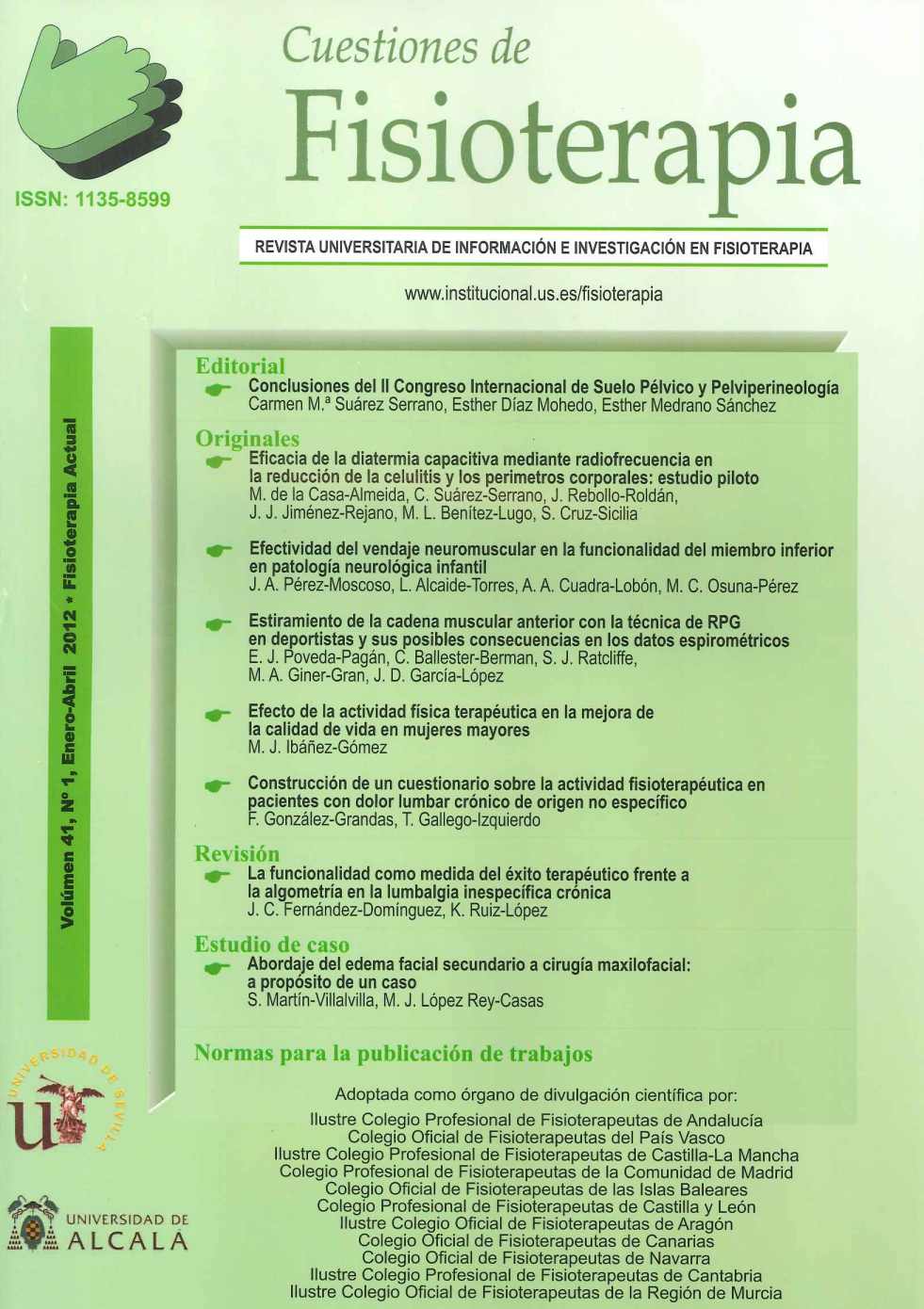Articles
Year 2015, Volume 44, Issue 1
Descriptive epidemiological study of a Physiotherapy unit in primary care
Abstract
Introduction: the proper performance of the functions of prevention and health promotion in primary care requires prior knowledge of the population health needs. Main objective: to know epidemiological data and activities undertaken in the Physiotherapy unit in a primary health centre in Soria in 2011. Material and method: descriptive observational study. The sample was formed by all users registered in the Physiotherapy Unit in 2011. Variables: features of users, reasons for referral, treatment received, compliance and effectiveness of it. Results: the average age of the users was 53.12 (±18.33) being the most common age range between 40 and 60. Women attended more Physiotherapy service (71.3 %) than men (28.7 %). Most users showed proper treatment compliance (89.2 %). The most frequently targeted pathologies were: neck pain (13.9 %), back pain (12.1 %), shoulder joint pathology (9.9 %), muscular shoulder pathology (7.4 %) and ankle sprain (7.2 %). The average number of sessions applied was 11.64 (±4.6). Electrotherapy and thermotherapy were the most widely used treatments. The physiotherapist felt that 20,79 % of patients had a slight improvement, 11,34 % obtained a significant improvement and 59,2 % improved. Conclusions: the user profile of a Physiotherapy unit in primary care is a woman with a mean age of 53.12 years. The most frequent pathologies treated were neck pain, back pain, shoulder joint or muscle pathology in the shoulder. The most common treatments applied for the management of these patients are electrotherapy and thermotherapy. These findings will be useful for developing future prevention programs and review current intervention procedures.
Keywords: Physical therapy modalities, primary health care, epidemiology, health services needs and demand.

